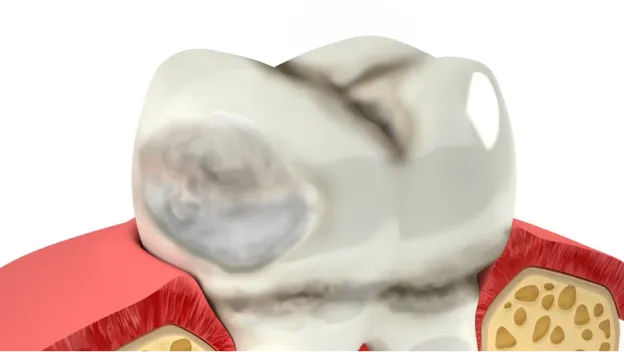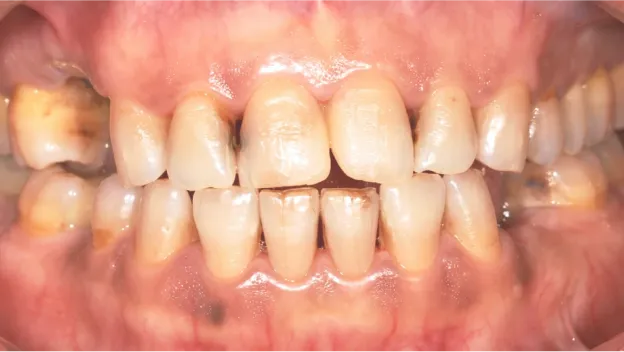CATCH CAVITIES EARLY: 7 TOOTH DECAY SYMPTOMS TO WATCH FOR
Signs of a cavity often depend on how serious it is and where it’s located in the mouth. Usually, cavity symptoms are not noticeable until the area of tooth decay gets larger. However, there are ways to help prevent and find treatment if cavities are discovered in their very early stages. Read on to discover how you can tell if you might have a cavity.
92% OF ADULTS HAVE DENTAL CAVITIES
How to Tell If You Have a Cavity
If you have any of the symptoms below or think you might have a cavity, check with your dental healthcare professional.

General Tooth Sensitivity
What does a cavity feel like? With a cavity, you will likely experience tooth sensitivity that can range from mild to severe. Tooth sensitivity, which can be sensitivity to cold or hot food to tooth pain, is one of the most common symptoms of a cavity and can seem to occur out of nowhere.

Tooth Pain When Eating or Drinking
Sensitivity or pain from a cavity or tooth decay can be especially noticeable when you eat or drink certain foods or beverages that are hot or cold. Even sweet foods and liquids can trigger tooth sensitivity related to a dental cavity. Check with your dentist to see whether your tooth sensitivity is due to a cavity or other causes.

Tooth Pain with Pressure
Even when not eating, if you experience sharp pain in your tooth when applying pressure or biting down, it could be the sign of a cavity or dental issue.

Cavities Can Cause Toothache
In the early stages of a cavity, you might have mild or no pain at all, which makes tooth decay hard to detect. However, if ignored, you could develop a toothache with severe pain in your teeth. This pain tends to be constant, whether you’re eating, talking, or doing nothing at all.

Holes or Pits in Teeth

What does a cavity feel like? When you have a cavity, you may be able to see a small hole in the tooth where the decay is occurring or feel it with your tongue. If you see or feel a tiny hole, dent, or pit in your tooth this could mean that you have a cavity. Be sure to visit your dentist if you have a concern with the health of your teeth.

Discoloration or Stain on Teeth

Another visible sign of a cavity can be tooth discoloration or stains on your teeth. A spot or stain on a tooth that appears bright white, brown or black could be another cavity symptom due to tooth decay. Although it could be a natural stain, have a dentist check it out if you’re concerned.

Cavities Can Lead to Bad Breath
Cavities are infected areas that can collect food particles and become breeding grounds for bacteria. Therefore, persistent bad breath or a bad taste in your mouth could be a sign of a cavity.
What Does a Cavity Look Like?
While it is usually difficult to see a cavity in its early stages, some cavities start with a whitish or chalky appearance on the enamel of your tooth. More serious cases of tooth decay can have a discolored brown or black color. However, most often there are no distinguishable red alerts. So how do you know if you have a cavity when there are few early cavity signs? A periodic X-ray at a dentist visit can help to easily identify tooth decay that could be caused by a dental cavity. It’s just another great reason to keep up with your regular six-month dental checkups.
How to Prevent Cavities
Between dentist visits, brushing daily with fluoride toothpaste and using oral care products, such as LISTERINE® TOTAL CARE ZERO FRESH MINT Anticavity Mouthwash, are great ways to help prevent cavities and tooth decay.




